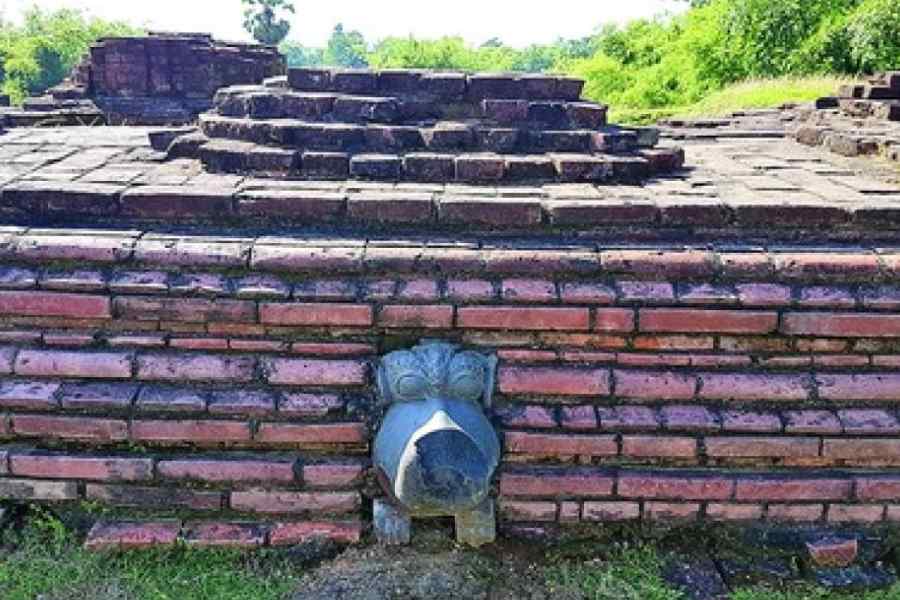The parliamentary standing committee on transport, tourism and culture has expressed “deep concern and disappointment” at the Union culture ministry’s “lack of seriousness” in responding to the panel’s recommendations on untraceable monuments.
In its 363rd report, tabled in Parliament last week, the committee chaired by Yuvajana Sramika Rythu Congress Party member V. Vijayasai Reddy also recommended that the Archaeological Survey of India (ASI) — which functions under the culture ministry — “explore the possibility of permitting pujas/ worship/ certain religious activities at historical Centrally Protected Monuments (CPMs) of religious significance….”
The story of untraceable monuments is almost a decade old. An audit of the Comptroller and Auditor General of India (CAG) in 2013 revealed that of the 1,655 centrally protected monuments it had jointly inspected with the ASI, 92 were missing. There are currently 3,695 centrally protected monuments in the country.
In 2017, then culture minister Mahesh Sharma had told Parliament that the ASI had found that only 24 monuments were untraceable.
On this list figure the “Ruins of fort, Bamanpukur, Nadia” in Bengal. A few months after Sharma’s reply, this newspaper had rediscovered the monument among the structures present at the Ballal Dhipi — a mound associated with 12th-century ruler Ballal Sen.
Last year, in its 324th report, the parliamentary committee had recommended: “ASI immediately undertake a survey of the remaining CPMs which were not inspected in the CAG Audit survey and ascertain whether there are any other missing monuments in the country apart from the 24 monuments.”
The 324th report was on “Issues relating to Untraceable Monuments and Protection of Monuments in India”. The 363rd report — the latest — is on action taken by the culture ministry on the 324th report.
It says: “Upon query of the Committee, the Ministry has informed that no further study of the remaining monuments has been undertaken for ascertaining how many more monuments are missing…. The Committee is perturbed to note that having found out that at least 24 monuments are untraceable out of the sample of monuments studied, no further surveys were conducted for the remaining monuments, even nearly a decade after the original study.”
The ministry has not replied to the committee on this observation.
Urging the Centre to “re-valuate its approach”, the report further said: “The Committee expresses its deep concern and disappointment at this apparent lack of seriousness, on the part of the Ministry, in responding to the Committee’s recommendations addressing critical issues. Disregarding or trivialising the views of the Committee undermines the trust, credibility and seriousness of the Ministry towards the development and preservation of the nation’s cultural heritage.”
The list is longer. In 2014, the Delhi circle of the ASI identified 13 more monuments that didn’t exist at their stated place. These included a statue of Brig. Gen. John Nicholson of the Bengal Army, at Kashmere Gate here, that had been gifted to Northern Ireland in 1958 but was retained on the list of protected monuments.
Some like the Moti Gate of Sher Shah near the Purana Qila have been mistakenly notified twice. Others like Joga Bai Mound and the Phoolchadar aqueduct in Mubarakabad have given way to private or government construction.
The Economic Advisory Council to the Prime Minister had published a report in January titled “Monuments of National Importance: the urgent need for rationalisation”. It recommended a reduction in the number of monuments under the ASI.
The monuments named for possible denotification or transfer to state archaeological departments included the graves of colonial officials, and the Kos Minar highway markers of the Mughal era.
Heritage expert Sohail Hashmi told The Telegraph: “Which monument is important or unimportant is a British concept imposed on us.”
He contrasted the care the British showed for their own historical structures with the disregard they reserved for monuments in India.
“Near Trafalgar Square (in London) for example, there are four bricks displayed which are described as the remains of a Roman-era road that was exposed during sewer construction. Here, some 300 wells and step-wells were demolished for the Central Vista when New Delhi was made (in the early 20th century),” he said.
“Any structure older than 125 years should be protected. Whether it is important or not can only be decided by experts and not bureaucrats.”
On the recommendation for allowing worship at certain sites if not detrimental to the monument, the ministry told the committee: “Noted for exploring feasibility. In this regard, it is to submit that as per the policy decision revival of worship is not allowed where it was not in vogue at the time of protection or abandoned since long.”
The ASI had objected after a puja was conducted by lieutenant governor Manoj Sinha at the Martand Sun Temple in Anantnag, Kashmir, last year.
“There are several mosques, madrasas and temples operating from encroached monuments in Mehrauli (near the Qutb Minar). It is impossible for the ASI to control construction and changes to the essential structure of monuments if worship is permitted in them,” author and heritage conservationist Swapna Liddle told this newspaper.
Last week, an ornate grill at an empty grave for Bahadur Shah Zafar collapsed in Mehrauli. The suspected vandalism led to outrage on social media. The parliamentary committee highlighted that only 6.7 per cent of centrally protected monuments have guards. In 2015, the committee, then chaired by former Trinamul member K.D. Singh, had recommended that a new force be raised to protect ASI monuments.











